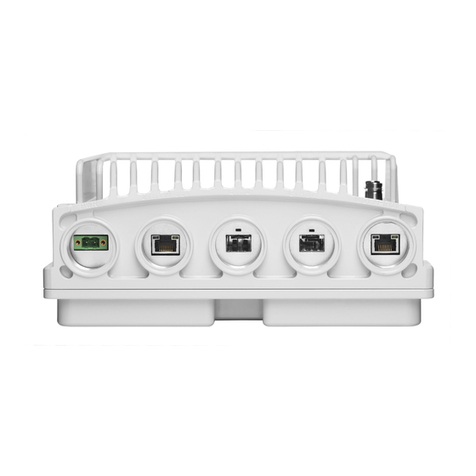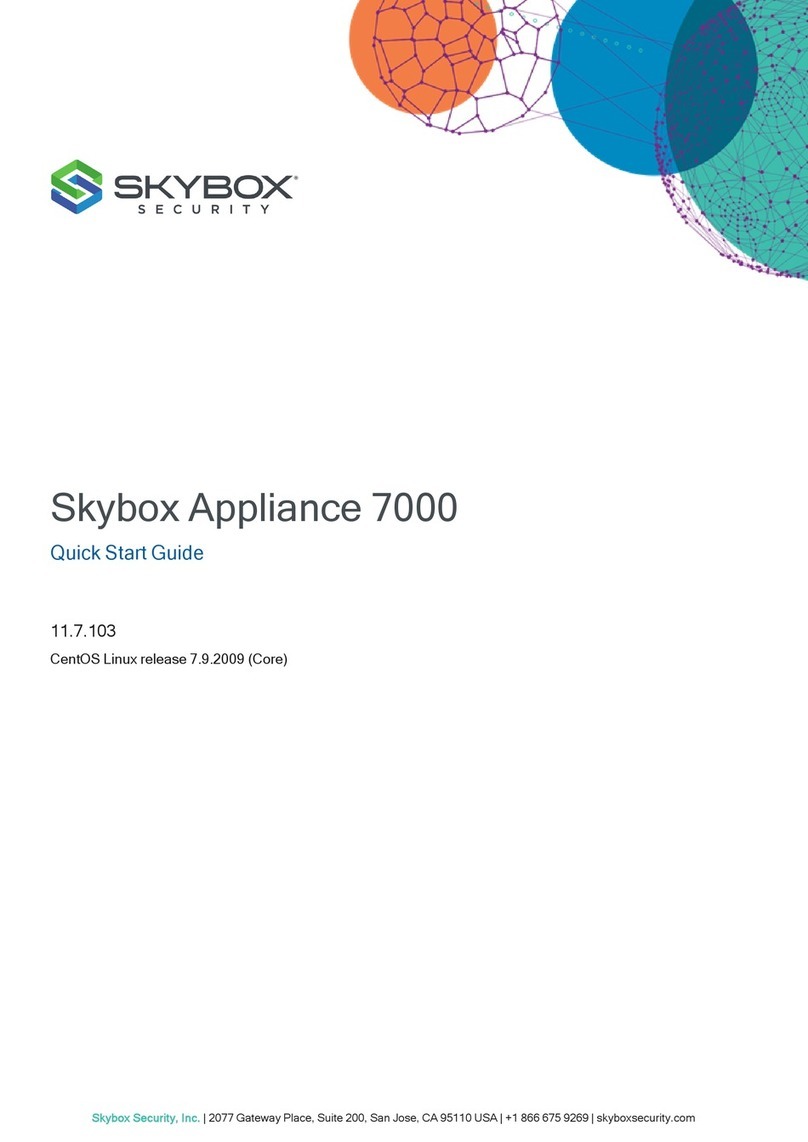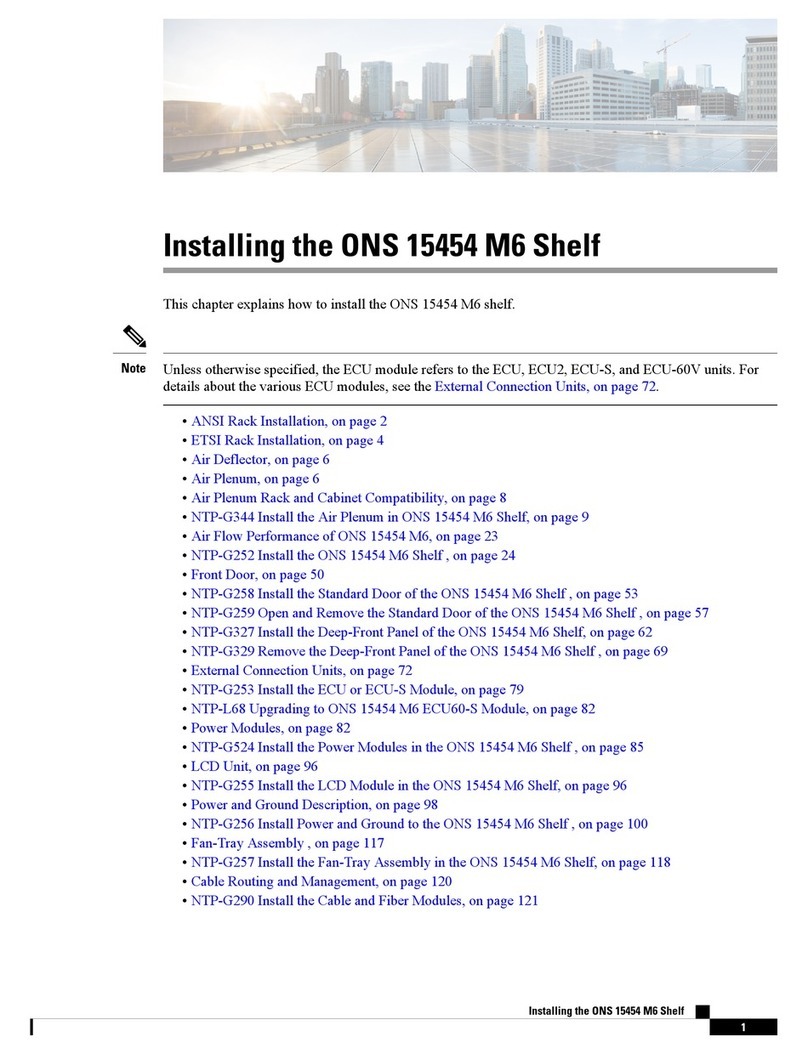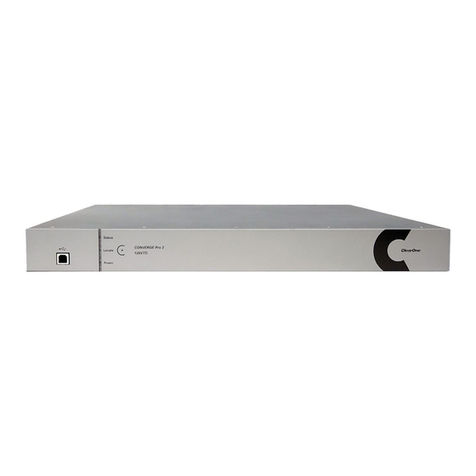Braviisol LUI MINI P.A. SPINGO User manual

S.S. 16 Adriatica km. 314,600
60022 Castelfidardo (AN)
Italia
Tel. +39 071 7819090 Fax +39 071 7819355
Website: www.bravi-platforms.com Spare parts: www.bravi-parts.com
12/2021

2
CONTENTS
CONTENUTO
’
’
PAG.
PAGE

3
-
Non iniziare interventi se
il cestello non è sostenuto
dall’asta di sicurezza;
o in caso di malfunzionamento
dell’asta di sicurezza;
da un altro sostegno alto
almeno 1 metro.
Tirare la leva di emergenza ed
abbassare il cestello fino a
circa 1 metro.
Utilizzare un’asta di almeno 1
metro per sostenere il cestello.
La predisposizione alla
manutenzione è terminata.
-
Con l’ausilio di un mezzo di
sollevamento sollevare il
cestello.
Utilizzare un’asta alta almeno
1 metro per sostenere il
cestello.
La predisposizione quando
il carrello non si alza è
terminata.
-
Do not initiate interventions if the
basket is not supported by the
safety shaft. If the safety shaft is
not functioning properly,
use another support that is at
least 1 meter high.
Pull the emergency lever to lower
the basket to approximately 1 me-
ter 30 centimeters.
Use a robust shaft of at least 1
meter to sustain the basket.
Once the basket does not lower
any more, the procedure is fin-
ished.
-
Using a lifting device lift the bas-
ket.
Use a robust shaft of at least 1
meter to sustain the basket.
Maintenance set up is over.
1.3A
1.2A

4
If the electric works, turn the key
switch to Service in order to ena-
ble the bottom controller.
Raise the basket up to abount
one meter in height.
Use a robust shaft of at least 1
meter to sustain the basket.
Once the basket does not lower
any more, the procedure is fin-
ished.
Se l’impianto elettrico
funziona, girare la chiave su
Service per abilitare i comandi
dal basso.
Alza il cestello fino a circa un
metro di altezza.
Utilizzare un’asta di almeno 1
metro per sostenere il cestello.
La predisposizione quando
il carrello non si alza è
terminata.
1.4A
1.4B

5
Con il pannello comandi
(vedere manuale d’uso) o
consultando la scheda 1 (1.1)
abbassare il cestello in una
posizione comoda di lavoro.
Prima di intervenire il
manutentore deve:
- Posizionare su “0”
l’interruttore a chiave
- Togliere la chiave di
accensione
- Conservare la chiave di
accensione in tasca.
Sganciare le due clip laterali
destra (2.3a) e sinistra (2.3b)
per rimuovere il cofano
anteriore e quello posteriore.
Scollegare il cavo di
alimentazione.
If necessary, using the command
panel (see user manual) or
consulting Form 1 (1.1), use a
lifting device to lift the basket until
it is supported by the safety bar.
Before intervening the
maintenance operator must:
- Position the
key switch to “0”
- Remove the key from the
ignition
- Place the ignition key
in a pocket
Unhook the right (2.3a) and left
side (2.3b) clips to remove the
front and rear cover.
Unplug the power cord.
2.3a
2.4
2.3b
2.2

6
Se l’operazione da fare è solo
il rabbocco o il controllo della
densità del liquido basta
alzare i coperchi delle batterie
ed intervenire secondo
necessità.
Se la batteria deve essere
sostituita procedere come
segue:
Svitare le due viti che tengono
ferma l’asta posta sopra la
batteria.
Staccare i capi corda dai
terminali della batteria.
Se è il caso, pulire i capicorda
o se sono in cattive condizioni
sostituirli o ripararli.
Eseguire a ritroso le
operazioni fino a qui viste per
rimontare il tutto (2.8 - 2.1).
Non disperdere le batterie
nell’ambiente ma rivolgersi
alle agenzie specializzate.
Gli interventi alle batterie sono
terminati.
If the operation is only filling or
density control of liquids, raise the
plastic cover batteries, perform
the operation as required.
If the battery is defective proceed
as follows:
Unscrew the two screws that hold
the shaft on top of the battery.
Unhook the ends of the cords
from the clamps of the battery.
If it is necessary, clean the cord
ends, and replace or repair them
if they are in bad condition.
To reassemble, follow the instruc-
tions in reverse described in 2.8
to 2.1.
Do not dispose of the batteries in
the environment, but only through
the services of specialized waste
disposal companies.
The interventions on the batteries
are finished.
2.6
2.7

7
Qualora il cestello sia nella
posizione alta; con il pannello
comandi (vedere manuale
d’uso) o come descritto nella
scheda 1 (1.1) abbassarlo
totalmente.
Prima di intervenire il
manutentore deve:
- Posizionare su “0”
l’interruttore a chiave
- Togliere la chiave di
accensione
- Conservare la chiave di
accensione in tasca.
Sganciare le due clip laterali
destra (3.3a) e sinistra (3.3b)
per rimuovere il cofano
anteriore e quello posteriore.
Scollegare il cavo di
alimentazione.
Using the command panel (see
user manual) or consulting Form
1, lower the basket to a comforta-
ble working position.
Before intervening the mainte-
nance operator must:
- Position the
key switch to “0”
- Remove the key from the
ignition
- Place the ignition key
in a pocket
Unhook the right (3.3a) and left
side (3.3b) clips to remove the
front and rear cover.
Unplug the power cord.
3.2
3.3a
3.3b
3.4

8
Scollegare il cavo spiralato dal
cestello.
Togliere le viti in figura per
smontare il coperchio colonna
e liberare il cestello.
Conservare il tutto per il
rimontaggio.
Con l’ausilio di un mezzo di
sollevamento (se carrello a
forche, le forche devono
essere lunghe minimo 80
centimetri) con la massima
cautela alzare e togliere il
cestello.
Consultare i disegni tecnici
(esplosi) e riparare il cestello
secondo necessità.
L’intervento sul cestello è
terminato. Rimontare il tutto
seguendo a ritroso (3.8 - 3.1)
le operazioni fino a qui viste.
Unplug the coiled cable from the
basket.
Unscrew the screws in figure to
dismount the column cover and
free the basket.
Save all for reassembly.
Using a lifting device (if using a
forklift, the forks must be at least
80 centimeters long),
with utmost caution lift and re-
move the basket.
Consult the technical exploded
drawings and repair the basket as
necessary.
The intervention on the basket is
finished. Reassemble following
the instructions in reverse de-
scribed in 3.8 to 3.1.
3.7
3.6
3.5

9
Munirsi di:
- dei robusti cavalletti per
sostenere il carrello
- una pompetta aspirazione
olio
- un contenitore di olio con
capacità minima di 10 litri
Comportarsi come descritto
nella scheda 3 per togliere
il cestello.
Con un mezzo di
sollevamento (se carrello a
forche, le forche devono
essere lunghe minimo
80 centimetri) sollevare e
posizionare il carrello sui due
robusti cavalletti (A).
Posizionare il contenitore di
olio (C) sotto il cilindro.
Rimuovere il cavo aprivalvola
di emergenza e la bobina dalla
valvola di emergenza e
conversarli per il
riassemblaggio.
Rimuovere dado e controdado
della leva di emergenza e
conservarli per il
riassemblaggio.
Necessary items:
– robust stands for
supporting the basket
– an oil suction
pump
– an oil container with
10 liters minimum capacity
Proceed as described in Form 3
to remove the basket.
Using a lifting device (if using a
forklift, the forks must be at least
80 centimeters long), lift and posi-
tion the basket onto the two
stands (A).
Place the oil container (C)
under the cylinder.
Remove the emergency lever and
the solenoid of the emergency
valve and save them for reassem-
bly.
Remove the nut and locking nut
to remove the emergency lever
and save them for reassembly.
4.1
BC
4.3
4.4
4.5
4.6

10
Rimuovere il cavo aprivalvola
di emergenza e conservarlo
per il riassemblaggio.
Svitare il raccordo del tubo
che va al distributore e poi il
dado per rimuovere il tubo
mandata olio e conservarlo
per il riassemblaggio.
Rimuovere le 8 viti sotto la
colonna e l’anello Seeger e
conservare il tutto per il
riassemblaggio.
Usando la massima cautela
imbracare e sollevare la
colonna. Portarla a banco e
consultando i disegni tecnici
riparare la colonna o sostituirla
con una nuova.
Rimontare il tutto seguendo a
ritroso (4.9 – 4.1) le operazioni
fino a qui viste.
Terminare il tutto con lo
spurgo dell’impianto idraulico
(vedere Scheda 6)
Remove the emergency lever and
save it for reassembly.
Unscrew the tube that leads to
the distributor and then the nut of
the oil pipe and remove and save
for reassembly the tube.
Remove the 8 screws and the
Seeger ring at the bottom of the
column and save them for reas-
sembly.
With utmost caution brace and lift
the column. Bring it to the work-
bench and consulting the tech-
nical drawings repair or replace
the column. Reassemble follow-
ing the instructions in reverse
described in 4.9 to 4.1. The pro-
cedure is finished once the oil
bleed is operated (see Form 6).
4.10
4.9
4.7
4.8

11
Consultare e comportarsi
come descritto nella scheda 4
fino all’azione 4.10 con
colonna a banco.
Svitare le 8 viti e togliere la
piastra/tappo della colonna più
esterna.
Svitare le 4 viti e togliere la
piastra/tappo della seconda
colonna interna.
Rimuovere l’anello Seeger del
cilindro.
Con cautela spingere il cilindro
fino a che esca dalla parte
opposta quel tanto sufficiente
per afferrarlo con le mani ed
estrarlo dal gruppo colonna.
Follow the instructions provided in
Form 4 up to step 4.10 with the
column on the workbench.
Completely unscrew the 8 screws
and remove the plate/top from the
outermost column.
Completely unscrew the 4 screws
in figure and remove the plate/top
from the inner column.
Remove the cylinder’s Seeger
ring.
Using caution, push the cylinder
until it comes out of the opposite
end enough to be able to hold it in
your hands and remove from the
column.
5.5
5.2
5.3
5.4

12
Sostituire il cilindro con uno
nuovo e inviare il cilindro
difettoso a Braviisol.
Per rimontare il cilindro e
la colonna eseguire a ritroso
le operazioni fino a qui viste
(5.6 - 5.1).
Per rimontare la colonna
sul carrello consultare
la scheda 4.
Gli interventi sul cilindro sono
terminati.
Procedere alla Scheda 6
per lo spurgo dell’impianto
idraulico
Replace the cylinder with a new
one and send the defective cylin-
der to Braviisol.
To reassemble the cylinder and
the column, follow the indications
described in points 5.8 to 5.1.
To reassemble the column
onto the machine, consult
Form 4.
Interventions on the cylinder are
finished.
Check the Form 6 for the hydrau-
lic system bleed.

13
’
Per lo spurgo dell’olio bisogna:
Munirsi di occhiali protettivi,
una piccola pompa di
aspirazione olio (B) e una
chiave a brugola da 5.
Togliere la vite svasata del
cestello in figura per accedere
alla vite di spurgo del cilindro.
Contemporaneamente
aspirare con la pompa l’olio,
e … allentare leggermente la
vite (situata sopra il cilindro)
fino a che non esce più aria
mista ad olio ma solo olio.
Quando esce solo olio lo
spurgo è completato.
Pulire l’eventuale fuoriuscita
dell’olio.
Non disperdere l’olio
nell’ambiente ma rivolgersi
alle agenzie specializzate.
Con il cestello abbassato,
mettere l’olio a livello (come
descritto sul manuale d’uso).
Sempre seguendo il manuale
d’uso:
- riavviare la macchina
- Alzare il cestello fino al limite
massimo
- Abbassare il cestello
- Rialzare il cestello di 2/3
centimetri
- Quindi rifare lo spurgo come
descritto al punto 6.1
Gli interventi sui motori/pompa
olio sono terminati.
To bleed the oil, it is necessary to:
Use a safety glasses, a small suc-
tion pump (B) and a number 5
Allen wrench.
Remove the countersunk screw of
the basket in figura to have ac-
cess to the cylinder bleed’s
screw.
Simultaneously suction with the
oil pump, and slightly loosen the
screws (located above the cylin-
der) until no more air comes out,
but only oil.
When only oil comes out, the
bleeding is complete.
Clean any oil spills.
Do not dispose of the oil in the
environment, but only through the
services of specialized waste dis-
posal companies.
With the basket lowered, fill the oil
to level (as described in the user
manual).
As indicated in the user manual:
- Restart the machine
- Raise the basket to its
maximum height
- Lower the basket
- Raise the basket again 2/3
centimeters
- Then repeat the oil bleeding
procedure as described in point
6.1.
Interventions on the hydraulic
system are finished.
6.3
6.1

14
Se necessario, con il pannello
comandi (vedere manuale
d’uso) o consultando la
scheda 1 (1.1) con un mezzo
di sollevamento sollevare il
cestello fino a che è sostenuto
da un’asta di sicurezza che è
in grado di sostenere il
cestello (vedi scheda 1)
Prima di intervenire il
manutentore deve:
- Posizionare su “0”
l’interruttore a chiave
- Togliere la chiave di
accensione
- Conservare la chiave di
accensione in tasca.
Sganciare le due clip laterali
destra (7.3a) e sinistra (7.3b)
per rimuovere il cofano
anteriore e quello posteriore.
Scollegare il cavo di
alimentazione.
If necessary, using the command
panel (see user manual) or con-
sulting Form 1 (1.1), use a lifting
device to lift the basket until it is
supported by a safety shaft that
can bear the weight of the basket.
(refer to form 1)
Before intervening the mainte-
nance operator must:
- Position the
key switch to “0”
- Remove the key from the
ignition
- Place the ignition key
in a pocket.
Unhook the right (7.3a) and left
side (7.3b) clips to remove the
front and rear cover.
Unplug the power cord.
7.2
7.3a
7.3b
7.4

15
Per rimuovere il caricabatterie,
svitare le due viti in figura e
scollegare i relativi cavi.
Sostituire il caricabatteria e
rimontare il tutto seguendo a
ritroso le operazioni fino a qui
viste.
Unscrew the two screws in figure
and unplug the related cable in
order to disconnect the battery
charger.
Replace the battery charger and
reassemble following the instruc-
tions in reverse as described
7.5

16
Munirsi di una vaschetta per
piccole perdite di olio (5 litri)
(B) e di due robusti cavalletti
(A) per sostenere il carrello.
Portare il cestello in condizioni
di sicurezza tramite un’asta o
barra che sostenga il suo peso
(vedi scheda 1)
Sganciare le due clip laterali
destra (8.2a) e sinistra (8.2b)
per rimuovere il cofano
anteriore e quello posteriore.
Scollegare il cavo di
alimentazione.
Con un mezzo di
sollevamento (se carrello a
forche, le forche devono
essere lunghe minimo
80 centimetri) sollevare e
posizionare il carrello sui due
robusti cavalletti (A).
Use a container to catch small oil
leaks (5 liters) (B) and two robust
stands (A) for supporting the bas-
ket. Bring the basket into a safe
position through a robust shaft
that sustain the weight of the bas-
ket (refer to form 1)
Unhook the right (8.2a) and left
side (8.2b) clips to remove the
front and rear cover.
Unplug the power cord.
Using a lifting device (if using a
forklift, the forks must be at least
80 centimeters long), lift and posi-
tion the basket onto the two
stands (A).
8.2a
8.2b
8.3
B
A
8.4

17
Posizionare il contenitore di
olio (B) sotto il cilindro.
Rimuovere il cavo aprivalvola
di emergenza e la bobina dalla
valvola di emergenza e
conversarli per il
riassemblaggio.
Rimuovere dado e controdado
della leva di emergenza e
conservali per il
riassemblaggio.
Rimuovere il cavo aprivalvola
di emergenza e conservarlo
per il riassemblaggio.
Svitare il raccordo del tubo
che va al distributore e poi il
dado per rimuovere il tubo
mandata olio e conservarlo
per il riassemblaggio.
Place the oil container (B)
under the cylinder.
Remove the emergency lever and
the solenoid of the emergency
valve and save them for reassem-
bly.
8.7
Remove the nut and locking nut
to remove the emergency lever
and save them for reassembly.
Remove the emergency lever and
save it for reassembly.
Unscrew the tube that leads to
the distributor and then the nut of
the oil pipe and remove and save
it for reassembly.
8.5
8.6
8.7
8.8
8.9

18
Svitare completamente le viti
che fissano la centralina
idraulica al piastrino
sottostante.
Con la massima cautela
portare a banco la centralina
e, consultando i disegni tecnici
(esplosi), effettua le riparazioni
necessarie o mandarla a
Braviisol per sostituzione.
Una volta riparato o sostituito
il gruppo idraulico, eseguire a
ritroso le operazioni fino a qui
descritte (8.11 - 8.2).
Non disperdere l’olio
nell’ambiente ma rivolgersi
alle agenzie specializzate.
Unscrew completely the screws in
figure that connect the hydraulic
power unit to the below plate.
With the utmost caution bring the
hydraulic power pack to the work-
bench. Consulting exploded tech-
nical drawings, repair the mo-
tor/pump group or send it to
Braviisol for replacement.
Once the hydraulic power pack is
repaired or replaced, follow the
instructions in reverse described
up to this point (8.11 to 8.2).
Do not dispose of the oil in the
environment, but only through the
services of specialized waste dis-
posal companies
8.13
8.10

19
Munirsi di due robusti
cavalletti per sostenere il
carrello. Portare il cestello in
condizioni di sicurezza cioè
sostenuto dalla barra di
sicurezza (vedi scheda 1)
Sganciare le due clip laterali
destra (9.2a) e sinistra (9.2b)
per rimuovere il cofano
anteriore e quello posteriore.
Scollegare il cavo di
alimentazione.
Con un mezzo di
sollevamento (se carrello a
forche, le forche devono
essere lunghe minimo
80 centimetri) sollevare e
posizionare il carrello sui due
robusti cavalletti (A).
Use two robust stands for sup-
porting the basket. Bring the bas-
ket into a safe position, until it is
supported by the safety bar (refer
to form 1)
Unhook the right (9.2a) and left
side (9.2b) clips to remove the
front and rear cover.
Unplug the power cord.
Using a lifting device (if using a
forklift, the forks must be at least
80 centimeters long), lift and posi-
tion the basket onto the two
stands (A).
9.2a
9.2b
9.3
A
9.4

20
Tramite apposite pinze
rimuovere la spina elastica in
figura posta nel perno della
ruota.
Rimuovere il perno della ruota
per sostituire la ruota con una
nuova.
Una volta sostituita la ruota
eseguire a ritroso le
operazioni fino a qui descritte
(9.6 - 9.2).
Se invece bisogna
bisogna:
Svitare la vite in figura e
scollegare il cavo del freno.
Using special pliers, remove the
elastic pin in the figure located in
the wheel axle.
Remove the wheel axle in order
to replace the wheel with a new
one.
Once the wheel is replaced follow
the instructions in reverse descri-
bed up to this point (9.6 to 9.2).
If it is necessary to
, proceed as follows:
Unscrew the screw in figure and
unplug the brake solenoid’s cable
connection.
9.5
9.6
9.8
Table of contents



